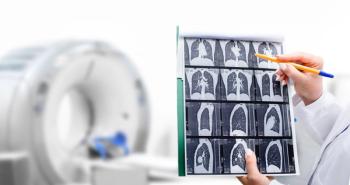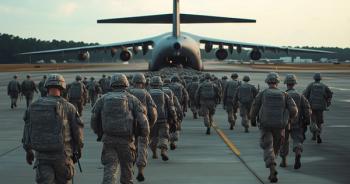
Childhood Air Pollution Found to Have Direct Impact on Adult Lung Health
USC researchers found a link between childhood exposure to nitrogen dioxide well below EPA limits and bronchitis symptoms in adults.
Although a link has long been suspected, research into the effects that exposure to air pollution in childhood has on adult respiratory health has been limited, partly because of practical difficulties.
With that in mind, a group of researchers at the Keck School of Medicine at the University of Southern California decided to evaluate the association between childhood air pollution exposure and self-reported adult bronchitic symptoms, while considering child respiratory health as a baseline.
The study, led by
The findings showed that air pollution breathed in during childhood is, in fact, one of the factors in adult lung health, revealing a direct association between childhood air pollution exposure and adult lung health.
“Our results suggest that childhood air pollution exposure has more subtle effects on our respiratory system that still impact us in adulthood,” Garcia said.
As a jumping-off point, the researchers collected data from a 1992 USC children’s health study that followed cohorts of SoCal children starting at school-age and, for many participants, continuing into adulthood. The new study looked to examine the lung health of these participants — many of whom are now in their 40s — in present time.
For the new data, 1,308 people answered a detailed questionnaires on their income, lifestyle (including smoking), homes and health. This was compared to their childhood health and the local air pollution when they were growing up.
Many of the questions dealt with a prevalence for bronchitis symptoms, be it bronchitis, chronic cough, or congestion or phlegm production not associated with a cold, and it was found that more than 25% of participants had experienced bronchitis symptoms within the previous 12 months.
Garcia explained that the presence of bronchitis symptoms was associated with exposure between birth and age 17 in two types of pollutants. One type groups together tiny particles in the air such as dust, pollen, ash from wildfires, industrial emissions and products from vehicle exhaust. The other, nitrogen dioxide, is a byproduct of combustion in automobiles, planes, boats and power plants that is known to hurt lung function.
A chief finding was that average childhood exposure to nitrogen dioxide for those with recent bronchitis symptoms as adults, registered far under annual Environmental Protection Agency standards, approximately 50% of the limit that was set in 1971 and remains in place today.
The study offered further analyses to rule out factors such as prenatal exposure to nitrogen dioxide, current air pollution exposure as adults and the effects of socioeconomic status in childhood or adulthood as drivers of bronchitis symptoms in adults.
“Our study highlights the importance of lowering air pollution, and especially exposure during the critical period of childhood,” Garcia said. “Because there’s only so much that we can do as individuals to control our exposure, the need to protect children from the adverse effects of air pollution is better addressed at the policy level.”
Looking ahead, Garcia and the researchers are considering further study on how the level of air pollution exposure at different ages during youth influences breathing issues as an adult and possibly examining other markers of childhood and adult respiratory health.
Newsletter
Get the latest industry news, event updates, and more from Managed healthcare Executive.




